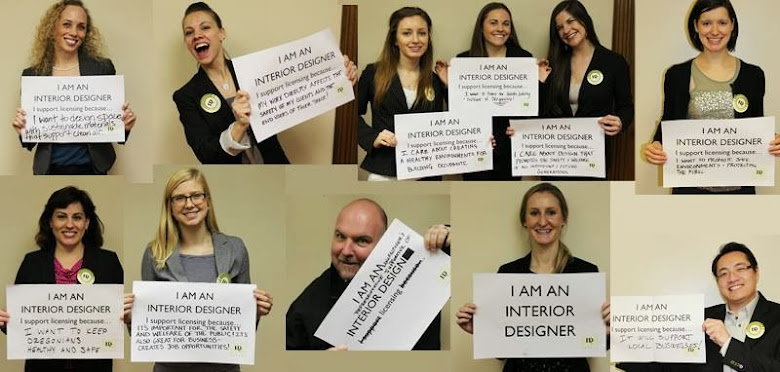I first heard of IDC-Oregon when my university was going through the process of becoming reaccredited. We met with members of the board, and was appalled to discover that commercial Interior Designers need no license to practice in Oregon. As a student among many who are dedicated to learning the profession, I was worried what this would mean for my career. More importantly, I became overwhelmingly worried about the protection and welfare of Oregonians. From then on, I became committed to IDC-Oregon.
Before Capitol Day, I researched and prepared myself so I could become acquainted with a few concepts:
- IDC-Oregon is an organization of professionals, students, and educators dedicated to enact licensure for commercial Interior Designers
- IDC-Oregon is committed to protecting and promoting the health, safety, and welfare of Oregonians by being dedicated to enact licensure that will hold commercial Interior Designers accountable.
- Commercial Interior Design licensure would eliminate exclusivity among Oregon building professionals by establishing equitable licensure.
Attending Capitol Day was exciting and new territory for me. When meeting with legislators, I mainly listened to other IDC members and their professional experiences. I realized it was just as important to attend Capitol Day to meet with legislators as it was to meet fellow IDC members.
As the day came to a close, I realized how much more I learned about the Interior Design profession and goals of IDC-Oregon:
- Commercial Interior Designers have an incredible broad scope of work that includes approximately 90% of the interior of a building; including space planning, egresses and exits, while extensively abiding by fire, building, and ADA code.
- Commercial Interior Designers have a great and significant responsibility to the public. After investigation of fires and other building disasters, many injuries and deaths have resulted from improper designs, finishes, and fixtures by Interior Designers that were not knowledgeable of fire, building, or ADA code. This is a tragedy that cannot continue. For any designer or building professional, it is our greatest duty to protect and serve all who enter commercial Oregon spaces.
- Oregon will continue to commit to a greener future by utilizing licensed Interior Designers who are trained in sustainable, energy-efficient practices.
This is an exciting time for commercial Interior Designers. I encourage anyone and everyone to become involved with IDC. Licensure for commercial Interior Designers is a promise to ourselves and Oregonians that there is a future of sustainable spaces which protect the health and safety of our citizens, and are designed by a team of equitably licensed professionals.
My name is Molly McDonald and I support IDC-Oregon for the future of Interior Design licensing.




















